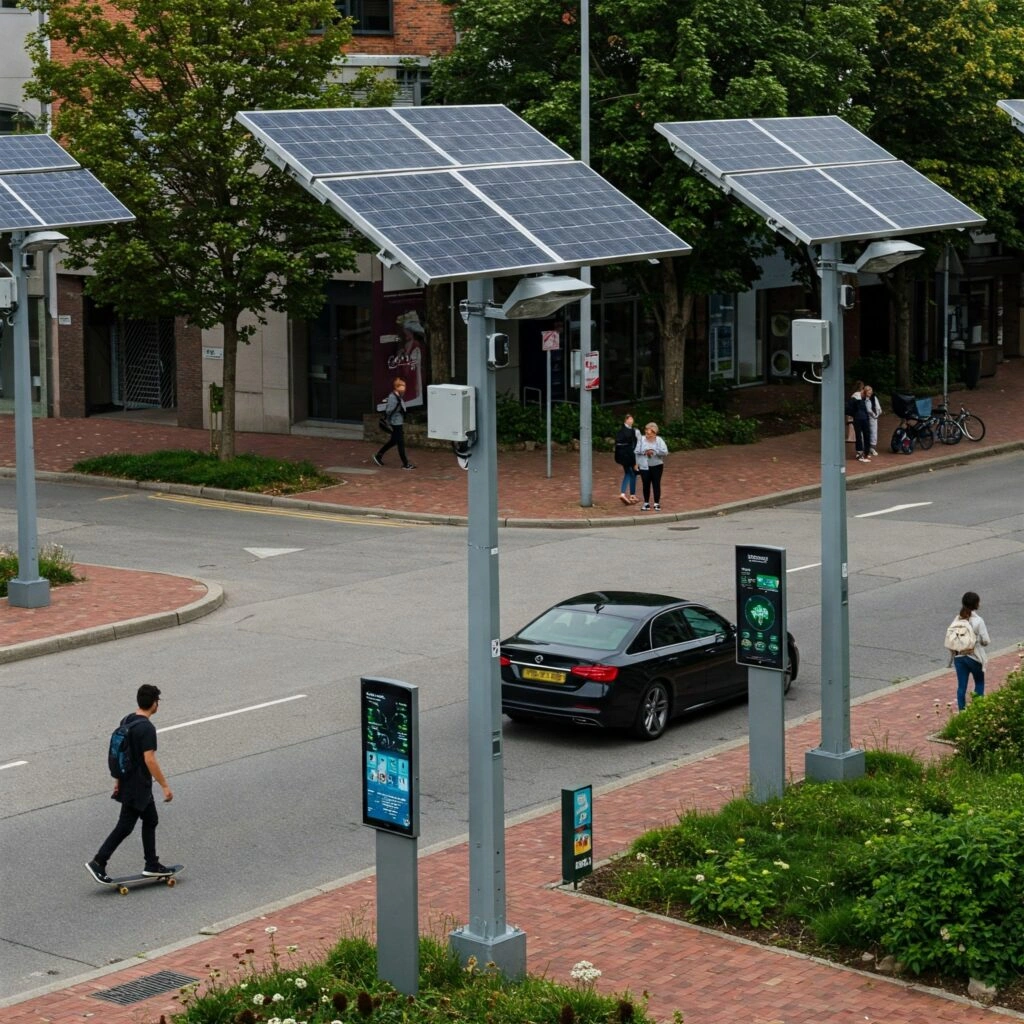
Efficient Solar Street Lighting Solutions for Smart City Development
As global attention on sustainability and green energy continues to rise, the concept of smart cities is emerging as a pivotal aspect of modern urban development. Among the essential infrastructure of smart cities, solar street lights have become increasingly prominent as an eco-friendly, energy-efficient lighting solution. Not only do these systems align with environmental goals, but they also play a key role in reducing urban energy consumption, making them indispensable to the sustainable growth of smart cities.
1. Advantages of High-Efficiency Solar Street Lights
Solar street lights harness solar energy, converting it into electricity through photovoltaic panels. This renewable energy source offers significant benefits over traditional grid-powered lighting systems. Solar energy is abundant, widely available, and renewable, meaning solar street lights can provide an autonomous energy solution that reduces reliance on the grid. This self-sufficiency translates to lower energy consumption and operating costs, especially in areas with abundant sunlight.
Moreover, solar street lights can significantly lower carbon emissions by reducing the need for fossil fuel-based electricity. The integration of high-efficiency LED lighting further enhances the energy savings, as LED bulbs consume far less energy than traditional incandescent or halogen lights, while offering longer service life and reduced maintenance costs.
2. Energy Efficiency and Environmental Benefits
One of the core principles of smart city development is energy efficiency and environmental sustainability. Solar street lights contribute directly to these objectives by utilizing solar energy for lighting. During the day, solar panels capture sunlight and store it in batteries, which are then used to power the lights at night. This system not only reduces the overall demand for electricity but also ensures that urban street lighting does not contribute to grid congestion during peak hours.
The use of LED lighting in these systems is critical for minimizing energy consumption. LEDs are up to 80% more efficient than traditional lighting, converting most of the energy they consume into light, with minimal heat waste. In addition, their extended lifespan further reduces the frequency of replacement and lowers the environmental impact associated with manufacturing, transportation, and disposal of traditional light bulbs.
3. Intelligent Control Systems for Optimized Performance
Intelligence is a cornerstone of smart city initiatives, and solar street lighting systems are no exception. Modern solar street lights come equipped with intelligent control systems and sensors that allow for real-time adjustments based on environmental conditions and traffic patterns. For example, lights can automatically dim during off-peak hours or brighten when motion is detected, ensuring optimal energy usage while maintaining safety.
Furthermore, the integration of remote monitoring and fault detection capabilities allows city managers to track the performance of each street light remotely. This smart management system alerts administrators to any malfunctions or inefficiencies, enabling rapid repairs and reducing maintenance costs. By providing real-time data on energy consumption, performance metrics, and potential issues, these systems enhance operational efficiency and resource allocation.
4. Off-Grid Capability and Reduced Infrastructure Costs
A significant advantage of solar street lights is that they operate independently from the electric grid. This reduces the need for extensive infrastructure, such as wiring and power connections, which are often required for traditional street lighting. As a result, solar-powered lighting solutions lower installation and maintenance costs and are especially advantageous in remote areas or places where access to the power grid is limited or unreliable.
Moreover, because solar street lights are self-sustaining, they can be deployed quickly and easily in new developments or areas undergoing infrastructure upgrades. This flexibility allows cities to expand their lighting networks without the need for expensive and disruptive electrical grid installations.
5. Integration with Other Smart City Systems
In a smart city, various systems work in concert to improve urban living. Solar street lights can seamlessly integrate with other smart city infrastructure, such as smart traffic management and environmental monitoring systems. For instance, the lighting systems can be equipped with sensors and cameras to gather traffic data, monitor air quality, or detect accidents in real-time, providing valuable insights for urban management.
By combining solar street lights with other smart technologies, cities can create a more cohesive, data-driven infrastructure that optimizes energy use, enhances public safety, and improves quality of life for residents.
Conclusion
High-efficiency solar street lighting is not only a sustainable and eco-friendly solution but also a crucial element in the broader vision of smart city development. With its energy-saving capabilities, intelligent management systems, and off-grid independence, solar street lighting offers significant advantages for cities aiming to build smarter, greener, and more sustainable urban environments. As technology continues to advance, solar street lights will undoubtedly play an increasingly important role in the future of urban infrastructure, contributing to the realization of smart, energy-efficient cities worldwide.



